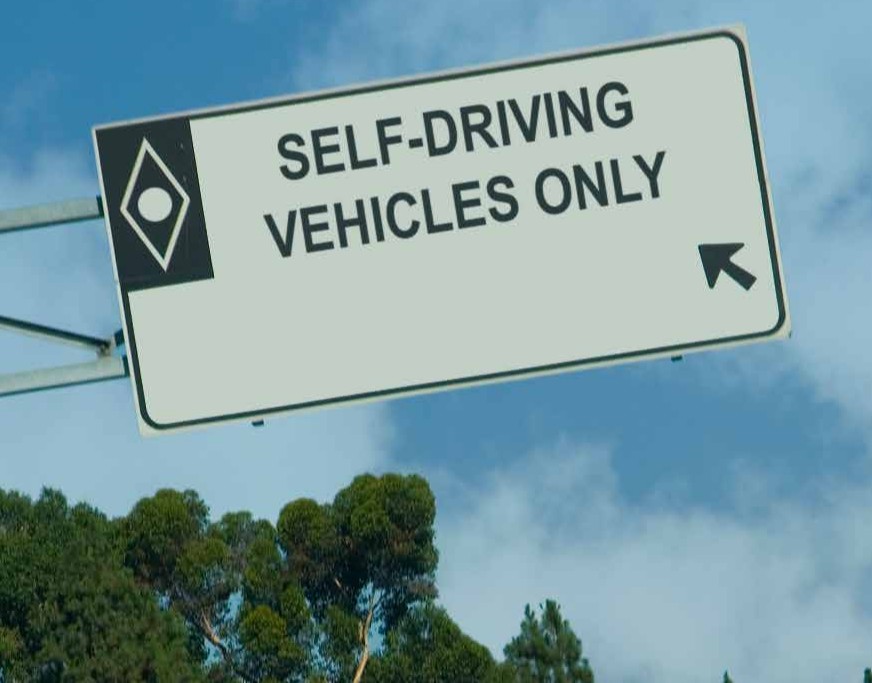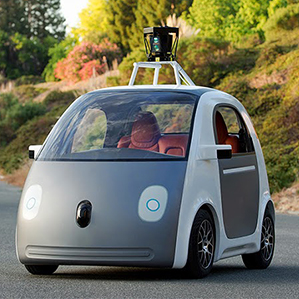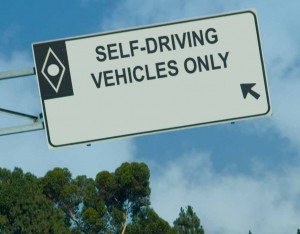June 1, 2014 – For us humans to totally trust non-human driven vehicles we will need assurances that they will be able to handle roadways where humans are also behind the wheel. In the last week Google launched the latest prototype in its Self-Driving Car Project.
The latest vehicle comes without a steering wheel. That means passengers can no longer take over the operation of the car. Why? Because Google discovered that modified standard cars equipped with all the things humans need to make a car get from Point A to Point B were creating operational headaches. These cars would let humans interrupt the autonomous driving capability of the vehicle. The switching back and forth and the use of conventional car models caused confusion. If the autonomous controls went off line would humans react quickly enough to take over control to avoid an accident? If the human was heading for a collision would the autonomous system create confusion as the human and robotic controller fought over who should take control?
So Google decided that it would be better to cut out the human driver from the equation entirely producing an electric vehicle (EV) with a range of 160 kilometers (100 miles) and a maximum speed of 40 kilometers (25 miles) per hour. With no accelerator pedal, no brake pedal and no steering wheel, there is no human potential for error. The vehicle instead has two steering motors and many redundant systems that can avoid collisions. All the passenger has to do is climb in and fasten his or her seat belt. Google plans to field test 100 of these new EVs (seen below) this summer.
How will it work? In a future seen by Google passengers will summon one of these cars by smartphone application very much the way you call for a taxicab today. Two passengers can be accommodated. When entering the vehicle they will belt in and then observe two buttons placed between the seats. One is for start and the other for emergency stops. A display in the front dash gives passengers vehicle information as well local weather, speed, time to destination and I am sure will even provide local news just like the displays seen in smart elevators these days. When the passengers arrive at their destination they will be reminded to take all personal belongings before leaving the vehicle. The vehicle will then be ready for a next smartphone summons.
Each vehicle has on board GPS, detailed digital maps for the driving area, numerous sensors and software that recognize objects in the vehicles 360 degree field of view. On board radar, lasers and 360-degree cameras provide vision depth to 180 meters (600 feet). The vehicle recognizes pedestrians, construction and all the other potential non-vehicle hazards to avoid. It is preprogrammed for defensive driving. For example, it waits for one second after a traffic light turns green before beginning to move. Other than that a human-driven car coming up behind it would never know the vehicle in front was driving itself.
But there are limitations to where such vehicles would be allowed to drive and current legislation around the world governing autonomous vehicles and their use remains limited. What’s still needed then to create the confidence to allow truly autonomous self-driving vehicles to enter the mainstream? Researchers at MIT believe that the answer lies with enhanced vision.
Current autonomous vehicles use camera systems that take about 0.2 seconds (30 frames per second) to update location and what they see. That sounds fast but even the unexpected can happen in 0.2 seconds. Using a system that combines a Dynamic Vision Sensor to detect changes in luminance with a CMOS-camera sensor to provide brightness values the autonomous vehicle’s vision would be far more responsive updating location and vision every one-thousandth of a second. With such vision autonomous vehicles would be far more responsive to what’s around them than any human driver. I’m sure that Google will be taking a look at this technology in future iterations of its self-driving vehicles.
So will we at some point see signs like the one pictured below? There are many compelling reasons for us to push the self-driving vehicle agenda forward.
One is the number of people killed each year in motor vehicle accidents. In 2010 in the U.S. that number was 31,328. It is clear that we humans behind the wheel are almost as dangerous as humans possessing guns.
Another is the need to reduce greenhouse gas emissions to mitigate against further damages from climate change. We’ll only do this if we change what we drive and the way we drive. Autonomous vehicles can contribute significantly to carbon reduction.
Quality of personal and work life is another. Autonomous vehicles will save commute time by reducing bottlenecks and traffic jams. Their smarts make it possible to convoy in close proximity to others so that even on high-volume roadways the traffic will move.


















[…] What’s Still Needed to Make Google’s Autonomous Car Dream Come True? (21stcentech.com) […]
[…] What’s Still Needed to Make Google’s Autonomous Car Dream Come True? https://www.21stcentech.com/needed-googles-autonomous-car-dream-true/ […]